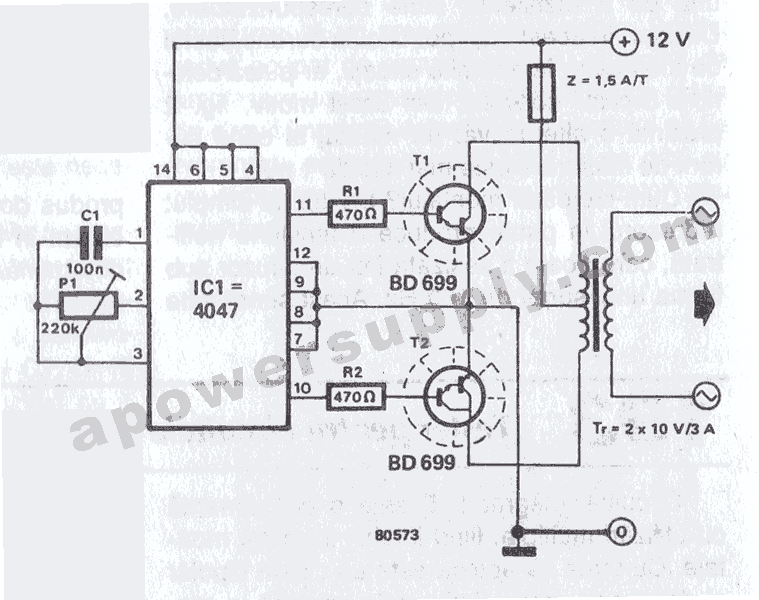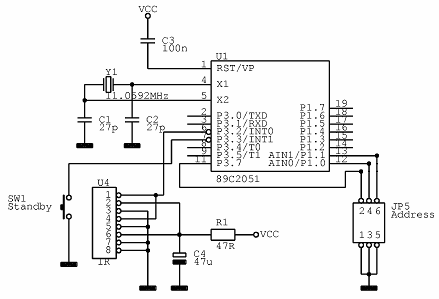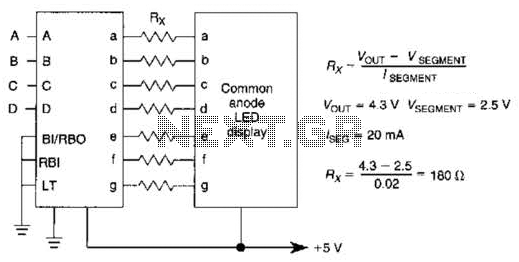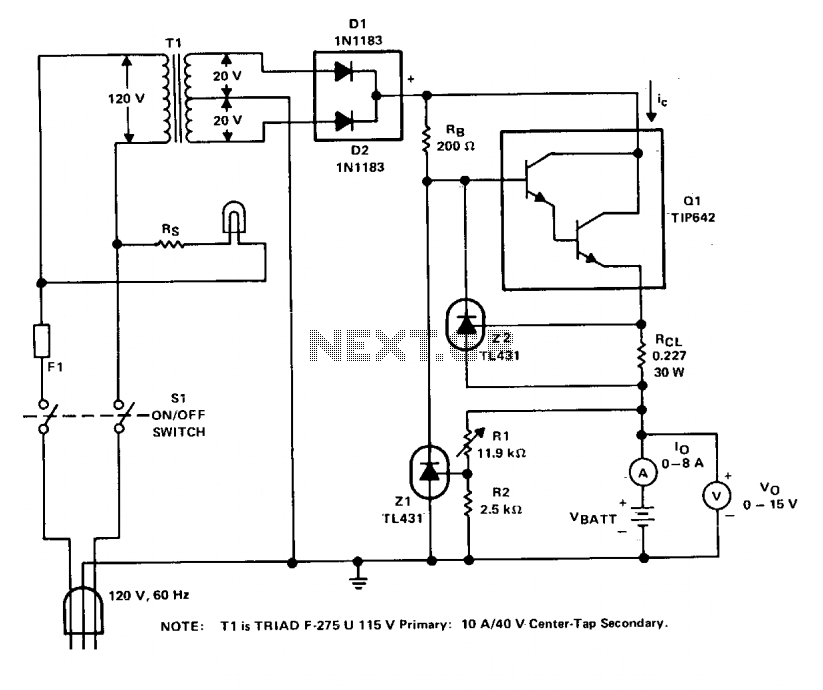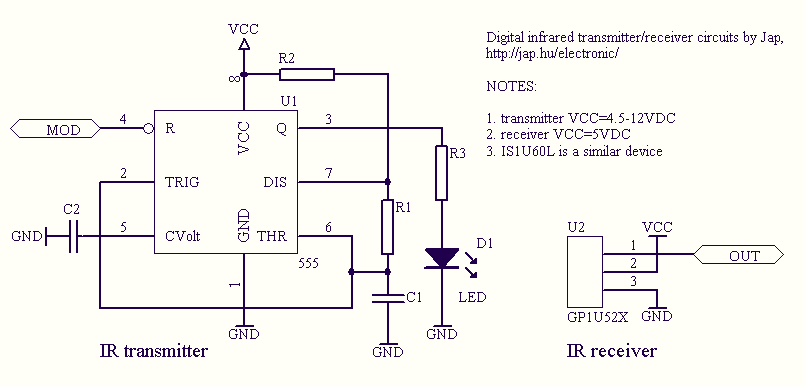
Unsteady chain circuit diagram
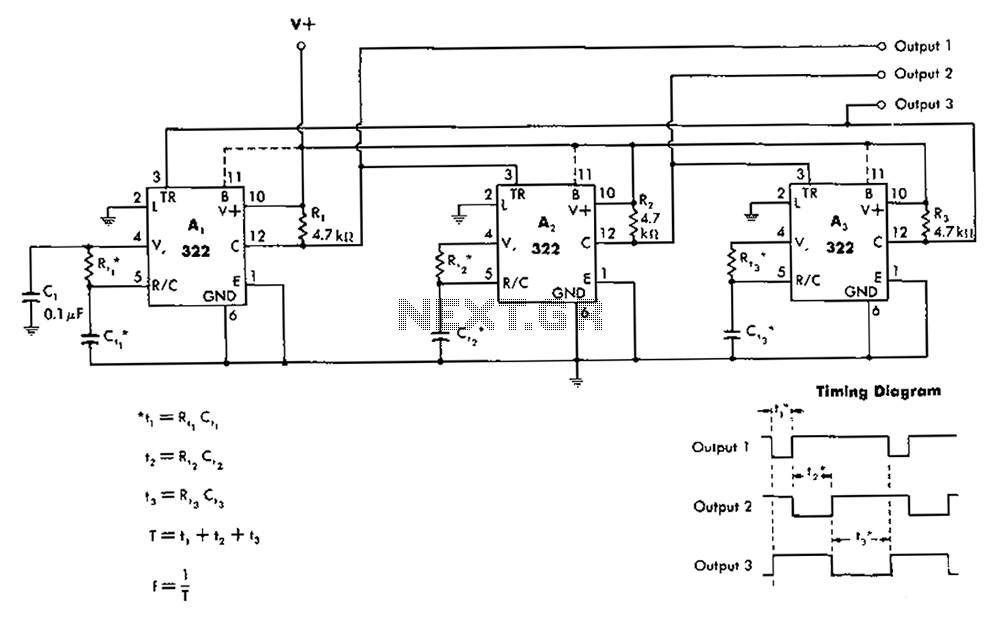
The 322 monostable multivibrator is configured in a cross-connected manner. When operating under non-steady state conditions with the oscillator Unicom, it generates a continuous timing cycle, as illustrated in the accompanying figure. T represents the total time period of three distinct cycles, with each cycle functioning independently. If needed, the circuit can be extended in a cascading manner. This configuration is suitable for specifying the sequence of timed events. The timing phase can be adjusted from 10 seconds to minutes by varying the resistance and capacitance values.
The 322 monostable multivibrator operates by producing a single output pulse in response to a triggering input. In this configuration, the multivibrator is cross-connected to create a feedback loop that enables continuous operation under specific conditions. The oscillator Unicom serves as the input source, providing the necessary triggering signal to initiate the timing sequence.
The total time period T, which encompasses three separate cycles, can be calculated using the standard formula for monostable multivibrators. The timing phase is directly influenced by the values of the resistors and capacitors used in the circuit. By adjusting these components, the timing can be finely tuned to achieve desired output durations ranging from 10 seconds to several minutes. This flexibility makes the circuit highly adaptable for various applications requiring precise timing control.
The cascading feature of this circuit allows multiple monostable multivibrators to be linked together, thereby creating a more complex timing sequence. Each stage can be configured to trigger the next, enabling the design of intricate timing patterns that can be utilized in automation, signal processing, or sequential control applications.
In summary, the 322 monostable multivibrator circuit is a versatile tool for generating timed events, with the ability to modify timing parameters through component selection and the option to extend functionality through cascading configurations. This makes it suitable for a wide range of electronic applications that require precise timing and control.322 monostable multivibrator is cross-connected, when run under non-steady state condition between the oscillator Unicom, it will produce a continuous timing cycle, the same as shown in FIG. T is the total time period of three separate cycles and these cycles on their own cycle. If desired, the circuit can be further extended chain. This circuit can be used to specify the sequence of timed events. The equation gives the timing phase from 10 S to minutes of resistance and capacitance values.
The 322 monostable multivibrator operates by producing a single output pulse in response to a triggering input. In this configuration, the multivibrator is cross-connected to create a feedback loop that enables continuous operation under specific conditions. The oscillator Unicom serves as the input source, providing the necessary triggering signal to initiate the timing sequence.
The total time period T, which encompasses three separate cycles, can be calculated using the standard formula for monostable multivibrators. The timing phase is directly influenced by the values of the resistors and capacitors used in the circuit. By adjusting these components, the timing can be finely tuned to achieve desired output durations ranging from 10 seconds to several minutes. This flexibility makes the circuit highly adaptable for various applications requiring precise timing control.
The cascading feature of this circuit allows multiple monostable multivibrators to be linked together, thereby creating a more complex timing sequence. Each stage can be configured to trigger the next, enabling the design of intricate timing patterns that can be utilized in automation, signal processing, or sequential control applications.
In summary, the 322 monostable multivibrator circuit is a versatile tool for generating timed events, with the ability to modify timing parameters through component selection and the option to extend functionality through cascading configurations. This makes it suitable for a wide range of electronic applications that require precise timing and control.322 monostable multivibrator is cross-connected, when run under non-steady state condition between the oscillator Unicom, it will produce a continuous timing cycle, the same as shown in FIG. T is the total time period of three separate cycles and these cycles on their own cycle. If desired, the circuit can be further extended chain. This circuit can be used to specify the sequence of timed events. The equation gives the timing phase from 10 S to minutes of resistance and capacitance values.
